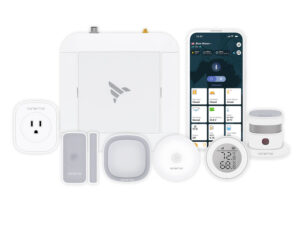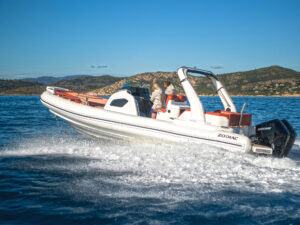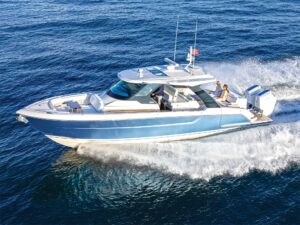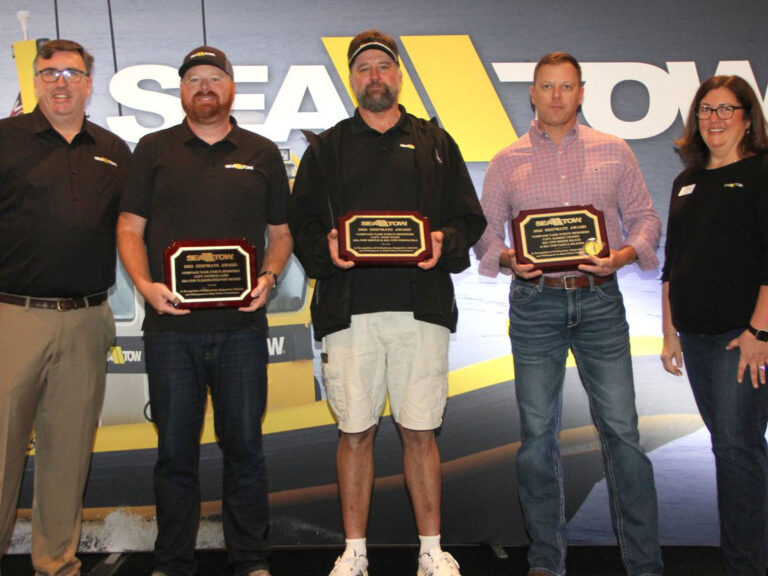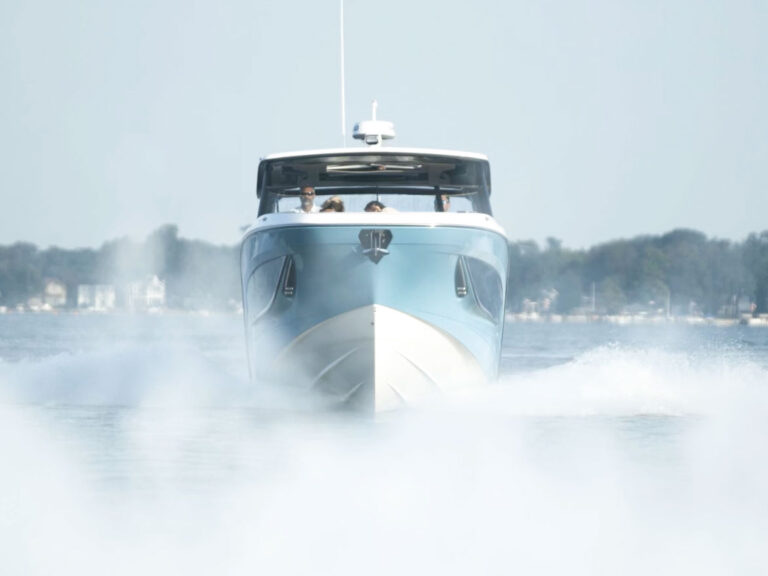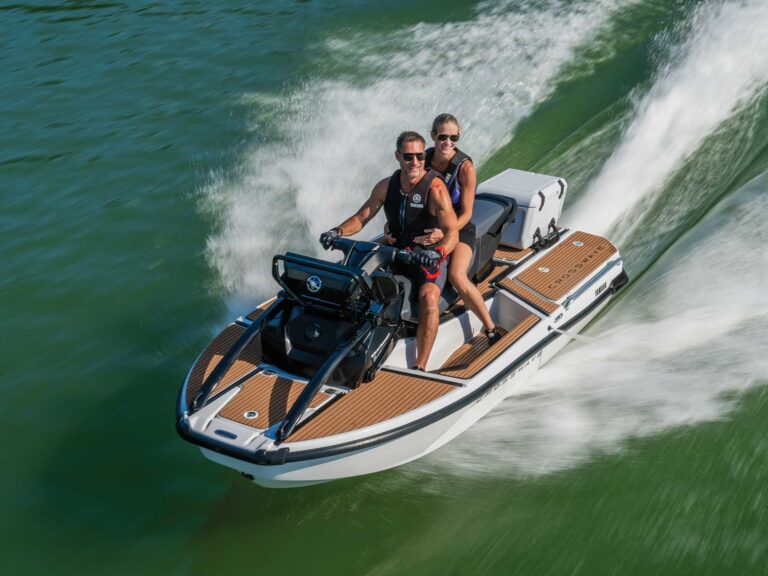
The sun glinted off the water in Gothenburg, Sweden, as Volvo Penta’s self-docking yacht backed slowly toward a waiting crowd.
The lustrous leather steering wheel spun all on its own. Nervous sailors leaned over from the decks of the neighboring Volvo Ocean 65 boats as the 68-foot yacht approached the narrow slot. This stopover of the around-the-world sailboat race was the unveiling of a long-awaited system in modern boating—full autonomy.
While autopilot has been available in boats for ages, Volvo’s new docking system moves beyond that. It’s a big step toward true self-driving boats. While cars can be expected to primarily move forward down a road, autonomy in boats is more complex because they have to be able to move in multiple directions. What’s more, for a boat, the road is moving. The yacht uses the joystick-controlled Volvo Penta Inboard Performance System (IPS), which was first sold in 2006. The company later introduced the Dynamic Positioning System, which uses individual drives to automatically preserve a boat’s heading and position, even during strong winds or tides. The self-docking yacht incorporates both of these systems into an onboard electronic vessel control system, which maneuvers the steering according to the boat’s actual position.
When the boat arrives in a predefined “catch zone,” it alerts the captain that it’s ready to activate the self-docking function. Once initiated, the boat relies on GPS to move close to the berth, and waits for the captain to enable the final stage, which utilizes both GPS and local sensors on both the boat and in the berth to define the docking space. The boat can then automatically safely guide itself to shore.
“Docking is one of the most challenging boat-handling maneuvers,” says Björn Ingemanson, president of Volvo Penta, who explains that the company hopes to make the process easier and safer.

The self-driving prototype was developed in just a matter of months. “This was an expected next step from Volvo Penta,” says Johan Inden, chief technology officer at Volvo Penta, but it was also a change in strategy. “We’re throwing ourselves out there with future ideas,” he says. Inden sees many potential future applications of autonomy, from autopilots docking larger ships on the commercial side to improving boater safety in dangerous conditions.
Volvo Penta anticipates the technology will be available by 2020. Volvo aims to develop the system so that it can be retrofitted to boats already rigged with an IPS system. But Volvo doesn’t plan on stopping there. Anders Thornin, manager of product planning for electronics at Volvo Penta, forecasts a boat capable of completely driving itself from point A to point B is less than five years away. “We’ve shown the technical capacity in a specific situation, but we will continue to learn more about what else we can do,” he says.
Back in Sweden, the yacht’s engines purred through a crosswind as it crept toward a dock with no help from human hands. The captain did look alarmed when an oblivious PWC rider roared directly behind the yacht, but it wasn’t even a close call. Eventually, the system will include anti-collision alerts too. Watching as the yacht eased the final feet into the berth with a gentle sway, Inden said: “Someday soon, you’ll be able to call for your boat and have it come pick you up. Fifteen years ago, technology was the hurdle. Now we’re only constrained by imagination.”


